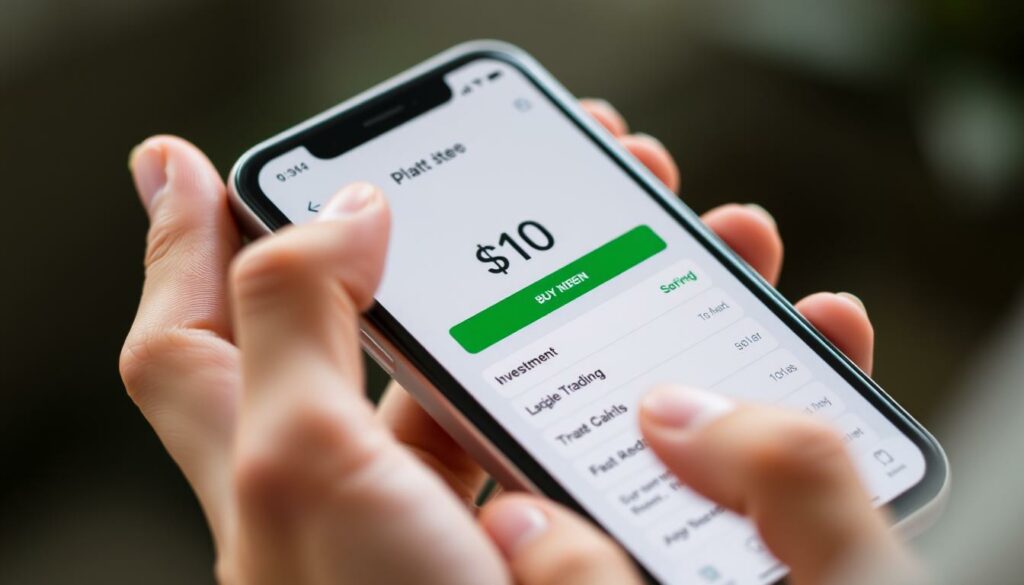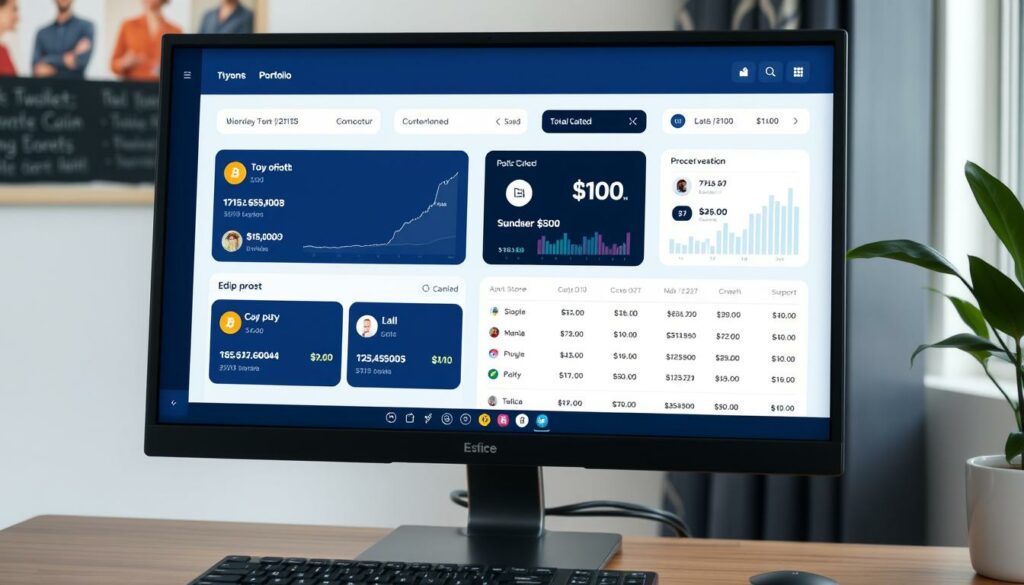What if you could transform pocket change into a $1,000 crypto portfolio? The world of crypto investing might seem intimidating at first glance – filled with unfamiliar terms, volatile price charts, and technical concepts. But here’s the truth: everyone starts somewhere, and your journey can begin with as little as $0. This guide will walk you through the exact steps to go from complete beginner to confident crypto investor, growing your portfolio to your first $1,000.
Why Consider Crypto Investing in 2025?
Crypto investing has evolved from a niche hobby to a mainstream financial activity. With institutional adoption, improved regulations, and easier access points, there’s never been a better time for beginners to start their journey. Unlike traditional markets, the crypto ecosystem offers unique advantages:
Accessibility
Start with as little as $5-10 on most platforms, with no minimum account requirements
24/7 Markets
Trade anytime, unlike stock markets with limited hours
Fractional Ownership
Buy tiny fractions of expensive cryptocurrencies like Bitcoin
Growth Potential
Exposure to emerging blockchain technology and digital assets
Crypto Investing 101: Understanding the Basics
Before diving into investment strategies, let’s establish a foundation. Cryptocurrency is digital money that uses cryptography for security and operates on technology called blockchain – a distributed ledger system. Unlike traditional currencies issued by governments (fiat), cryptocurrencies are decentralized, meaning no single entity controls them.
Key Concepts Every Beginner Should Know
Blockchain
The underlying technology that records all transactions across a network of computers
Wallet
Digital storage for your cryptocurrencies (hot wallets are online, cold wallets are offline)
Exchange
Platforms where you can buy, sell, and trade cryptocurrencies
Important: Cryptocurrency investments are highly volatile and speculative. Never invest more than you can afford to lose, and consider consulting with a financial advisor before making significant investments.
Start with $0: Free Crypto Earning Methods
Believe it or not, you can begin your crypto investing journey without spending a dime. Here are proven methods to earn your first crypto for free:

Learn-to-Earn Programs
Platforms like Coinbase offer educational courses where you watch videos and take quizzes about different cryptocurrencies. Upon completion, you earn actual crypto (typically $3-10 worth per course).
Potential earnings: $20-50 in various cryptocurrencies
Faucets
Websites that give away small amounts of cryptocurrency for completing simple tasks like solving captchas or viewing ads.
Potential earnings: $5-15 per month with consistent use
Airdrops
Free distributions of new cryptocurrencies to build awareness. Follow crypto news sites to stay informed about upcoming airdrops.
Potential earnings: Varies widely, from $1 to $100+
“I started my crypto journey with zero investment by completing all Coinbase learn courses. Within a month, I had accumulated about $40 worth of various cryptocurrencies, which grew to over $120 in the following bull market.”
Choosing Your First $10 Crypto Investment
Once you’ve earned some free crypto or are ready to invest a small amount, it’s time to make your first intentional investment. With just $10, you can begin building your portfolio strategically.

Beginner-Friendly Cryptocurrencies
| Cryptocurrency | Why It’s Beginner-Friendly | Risk Level | Minimum Investment |
| Bitcoin (BTC) | Largest market cap, highest adoption, considered “digital gold” | Medium | $1-5 |
| Ethereum (ETH) | Powers thousands of applications, strong developer community | Medium | $1-5 |
| Stablecoins (USDC, DAI) | Pegged to USD, minimal price volatility, good for learning | Low | $1+ |
Warning: Avoid investing in obscure “meme coins” or projects promising unrealistic returns when you’re just starting. These often carry extremely high risk and can result in complete loss of investment.
Case Study: Jane’s First $10 Investment

Jane, a teacher with no prior investing experience, started her crypto journey with just $10 in Bitcoin. “I was terrified of losing money, so I started with an amount that wouldn’t hurt if it disappeared,” she explains.
Her strategy was simple: she set up a recurring $10 weekly purchase (dollar-cost averaging) regardless of Bitcoin’s price. Within 6 months, her initial investment had grown to approximately $320, even through market volatility.
“The key was consistency and patience. I didn’t panic sell during dips, and I only invested money I could afford to lose,” Jane says.
Growing Your Crypto Investing Portfolio to $100
Once you’ve made your first small investment and become comfortable with the basics of crypto investing, it’s time to strategically grow your portfolio to $100. This phase is about building habits and diversification.

Effective Strategies for Portfolio Growth
Dollar-Cost Averaging (DCA)
Invest a fixed amount regularly (weekly/monthly) regardless of price fluctuations. This reduces the impact of volatility.
Example: $10 every week into Bitcoin
Strategic Diversification
Spread investments across 2-3 established cryptocurrencies to reduce risk while maintaining growth potential.
Example: 60% BTC, 30% ETH, 10% stablecoins
Staking Rewards
Earn passive income by staking certain cryptocurrencies, similar to earning interest.
Example: 5-12% APY on platforms like Kraken
Pro Tip: Set up automatic recurring purchases on exchanges like Coinbase or Binance to maintain your DCA strategy without having to remember manual purchases.
Scaling to $1,000 Safely in Crypto Investing
Reaching the $1,000 milestone in your crypto portfolio requires discipline, research, and risk management. This phase focuses on sustainable growth while protecting your investments.
Security Becomes Critical
As your portfolio grows, security should become a top priority. Consider these essential security measures:
Advanced Portfolio Management
Recommended Approach
- Maintain 60-70% in established cryptocurrencies (BTC, ETH)
- Allocate 20-30% to promising mid-cap projects with strong fundamentals
- Keep 10% in stablecoins for buying opportunities during market dips
- Track portfolio performance using tools like CoinMarketCap or FTX
- Set clear profit-taking targets (e.g., sell 10% when an asset doubles)
Approaches to Avoid
- Investing based on social media hype or FOMO
- Putting more than 5% of your portfolio in high-risk new tokens
- Attempting to time the market with frequent trading
- Using leverage or margin trading as a beginner
- Investing money needed for essential expenses
Real-Life Success: How David Reached $1,000
David, a college student, started with $0 by completing learn-to-earn programs. “I earned about $30 in free crypto, then added $20 of my own money,” he explains. His strategy:
Within 8 months, David’s portfolio crossed the $1,000 mark. “The key was consistency and emotional discipline. I didn’t let price swings affect my strategy.”
Ready to secure your growing portfolio?
Protect your investments with a Ledger hardware wallet – the industry standard for crypto security.
Best Platforms for Beginner Crypto Investing
Choosing the right platform is crucial for a smooth crypto investing experience. Here are the top beginner-friendly exchanges based on ease of use, security, and features:

Coinbase
Best for: Complete beginners, learn-to-earn opportunities
Minimum deposit: $2
Unique feature: Extensive educational resources and earn opportunities
Binance.US
Best for: Lower fees, wider selection of cryptocurrencies
Minimum deposit: $10
Unique feature: Staking options with competitive APY rates
Kraken
Best for: Security-focused beginners, staking options
Minimum deposit: $10
Unique feature: Strong security track record and excellent customer support
Avoiding Common Crypto Investing Scams
As your portfolio grows, you’ll become a more attractive target for scammers. Here are the most common crypto scams and how to avoid them:
Pig Butchering Scams
Scammers build relationships (often romantic) over time before convincing victims to invest in fake crypto platforms. They show fake profits to encourage larger deposits, then disappear with the funds.
Red flags: Strangers contacting you about investment opportunities, platforms you can’t verify independently, pressure to invest quickly
Fake Exchanges
Fraudulent websites that mimic legitimate exchanges but steal your deposits and personal information.
Red flags: Slightly misspelled URLs, unusual domain extensions, lack of proper security certificates, extremely high returns promised
Pump and Dump Schemes
Coordinated efforts to artificially inflate the price of a cryptocurrency before selling off holdings, causing the price to crash.
Red flags: Sudden price spikes in obscure tokens, aggressive promotion on social media, promises of “guaranteed returns”
Frequently Asked Questions About Crypto Investing

Is crypto investing safe for beginners?
Crypto investing carries significant risks due to high volatility and the evolving regulatory landscape. However, beginners can invest safely by starting with small amounts, sticking to established cryptocurrencies like Bitcoin and Ethereum, using reputable exchanges, and never investing money they can’t afford to lose. Education is also crucial – understanding the basics before investing significantly reduces risk.
What’s the minimum amount needed to start crypto investing?
You can start crypto investing with as little as -10 on most major exchanges. Some platforms even allow you to earn free crypto through educational programs or tasks. The key is to start small and increase your investments gradually as you gain knowledge and confidence.
How long does it take to grow a portfolio to
Frequently Asked Questions About Crypto Investing

Is crypto investing safe for beginners?
Crypto investing carries significant risks due to high volatility and the evolving regulatory landscape. However, beginners can invest safely by starting with small amounts, sticking to established cryptocurrencies like Bitcoin and Ethereum, using reputable exchanges, and never investing money they can’t afford to lose. Education is also crucial – understanding the basics before investing significantly reduces risk.
What’s the minimum amount needed to start crypto investing?
You can start crypto investing with as little as $2-10 on most major exchanges. Some platforms even allow you to earn free crypto through educational programs or tasks. The key is to start small and increase your investments gradually as you gain knowledge and confidence.
How long does it take to grow a portfolio to $1,000?
The timeline varies greatly depending on your initial investment, regular contribution amount, market conditions, and investment choices. With a disciplined approach of regular small investments (e.g., $25-50 weekly), most beginners can reach $1,000 within 6-12 months. However, this is not guaranteed due to market volatility.
Do I need to pay taxes on my crypto investments?
Yes, in most countries, cryptocurrency is treated as property for tax purposes. This means you may owe capital gains taxes when you sell or exchange crypto at a profit. Keep detailed records of all transactions, including dates, amounts, and values in your local currency. Consider using crypto tax software or consulting with a tax professional familiar with digital assets.
Should I invest in NFTs as a beginner?
NFTs (Non-Fungible Tokens) are generally not recommended for complete beginners to crypto investing. They tend to be more speculative, less liquid, and harder to value than major cryptocurrencies. It’s better to build a foundation with established cryptocurrencies first, then explore NFTs only after gaining experience and if you have a specific interest in digital art or collectibles.

Is crypto investing safe for beginners?
Crypto investing carries significant risks due to high volatility and the evolving regulatory landscape. However, beginners can invest safely by starting with small amounts, sticking to established cryptocurrencies like Bitcoin and Ethereum, using reputable exchanges, and never investing money they can’t afford to lose. Education is also crucial – understanding the basics before investing significantly reduces risk.
What’s the minimum amount needed to start crypto investing?
You can start crypto investing with as little as $2-10 on most major exchanges. Some platforms even allow you to earn free crypto through educational programs or tasks. The key is to start small and increase your investments gradually as you gain knowledge and confidence.
How long does it take to grow a portfolio to $1,000?
The timeline varies greatly depending on your initial investment, regular contribution amount, market conditions, and investment choices. With a disciplined approach of regular small investments (e.g., $25-50 weekly), most beginners can reach $1,000 within 6-12 months. However, this is not guaranteed due to market volatility.
Do I need to pay taxes on my crypto investments?
Yes, in most countries, cryptocurrency is treated as property for tax purposes. This means you may owe capital gains taxes when you sell or exchange crypto at a profit. Keep detailed records of all transactions, including dates, amounts, and values in your local currency. Consider using crypto tax software or consulting with a tax professional familiar with digital assets.
Should I invest in NFTs as a beginner?
NFTs (Non-Fungible Tokens) are generally not recommended for complete beginners to crypto investing. They tend to be more speculative, less liquid, and harder to value than major cryptocurrencies. It’s better to build a foundation with established cryptocurrencies first, then explore NFTs only after gaining experience and if you have a specific interest in digital art or collectibles.
,000?
The timeline varies greatly depending on your initial investment, regular contribution amount, market conditions, and investment choices. With a disciplined approach of regular small investments (e.g., -50 weekly), most beginners can reach
Frequently Asked Questions About Crypto Investing

Is crypto investing safe for beginners?
Crypto investing carries significant risks due to high volatility and the evolving regulatory landscape. However, beginners can invest safely by starting with small amounts, sticking to established cryptocurrencies like Bitcoin and Ethereum, using reputable exchanges, and never investing money they can’t afford to lose. Education is also crucial – understanding the basics before investing significantly reduces risk.
What’s the minimum amount needed to start crypto investing?
You can start crypto investing with as little as $2-10 on most major exchanges. Some platforms even allow you to earn free crypto through educational programs or tasks. The key is to start small and increase your investments gradually as you gain knowledge and confidence.
How long does it take to grow a portfolio to $1,000?
The timeline varies greatly depending on your initial investment, regular contribution amount, market conditions, and investment choices. With a disciplined approach of regular small investments (e.g., $25-50 weekly), most beginners can reach $1,000 within 6-12 months. However, this is not guaranteed due to market volatility.
Do I need to pay taxes on my crypto investments?
Yes, in most countries, cryptocurrency is treated as property for tax purposes. This means you may owe capital gains taxes when you sell or exchange crypto at a profit. Keep detailed records of all transactions, including dates, amounts, and values in your local currency. Consider using crypto tax software or consulting with a tax professional familiar with digital assets.
Should I invest in NFTs as a beginner?
NFTs (Non-Fungible Tokens) are generally not recommended for complete beginners to crypto investing. They tend to be more speculative, less liquid, and harder to value than major cryptocurrencies. It’s better to build a foundation with established cryptocurrencies first, then explore NFTs only after gaining experience and if you have a specific interest in digital art or collectibles.
,000 within 6-12 months. However, this is not guaranteed due to market volatility.
Do I need to pay taxes on my crypto investments?
Yes, in most countries, cryptocurrency is treated as property for tax purposes. This means you may owe capital gains taxes when you sell or exchange crypto at a profit. Keep detailed records of all transactions, including dates, amounts, and values in your local currency. Consider using crypto tax software or consulting with a tax professional familiar with digital assets.
Should I invest in NFTs as a beginner?
NFTs (Non-Fungible Tokens) are generally not recommended for complete beginners to crypto investing. They tend to be more speculative, less liquid, and harder to value than major cryptocurrencies. It’s better to build a foundation with established cryptocurrencies first, then explore NFTs only after gaining experience and if you have a specific interest in digital art or collectibles.
Your Crypto Investing Journey: From $0 to $1,000 and Beyond
Starting your crypto investing journey with little to no money might seem challenging, but as we’ve explored, it’s entirely possible to grow a portfolio from $0 to $1,000 through patience, education, and consistent small investments.
Remember that the most successful crypto investors focus on long-term growth rather than get-rich-quick schemes. By starting small, learning continuously, practicing security measures, and gradually increasing your investments, you can build a meaningful crypto portfolio regardless of your starting point.
The crypto market will continue to evolve, bringing both challenges and opportunities. Stay informed, remain cautious, and never stop learning. Your journey from beginner to confident crypto investor has just begun.
